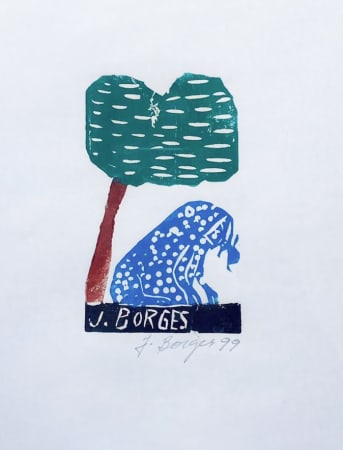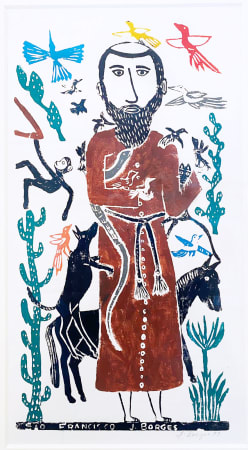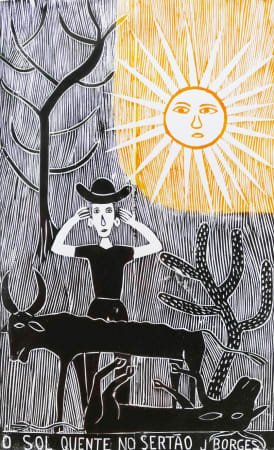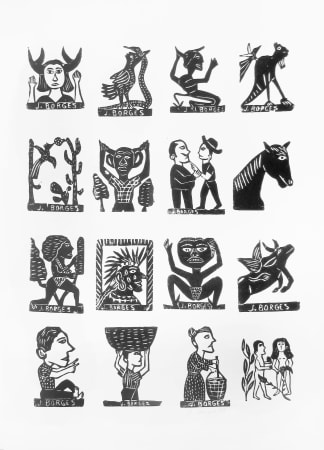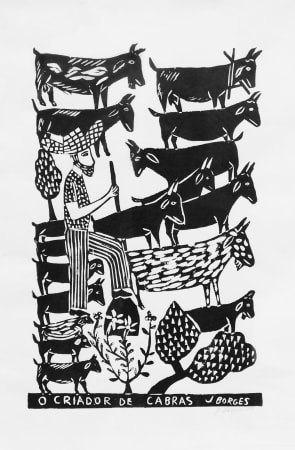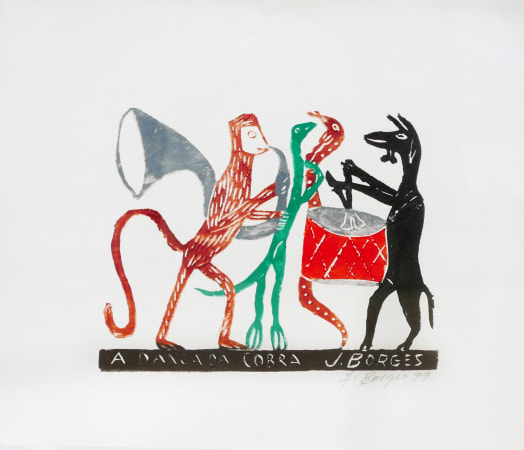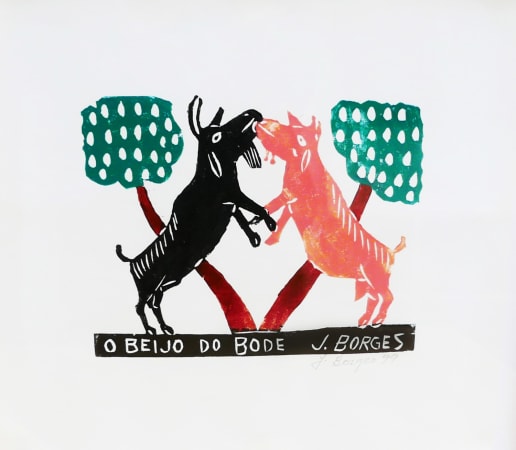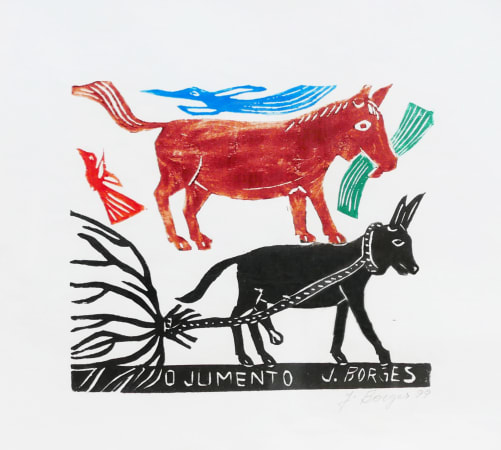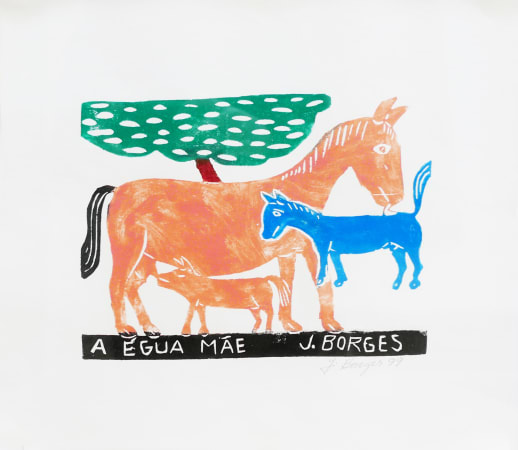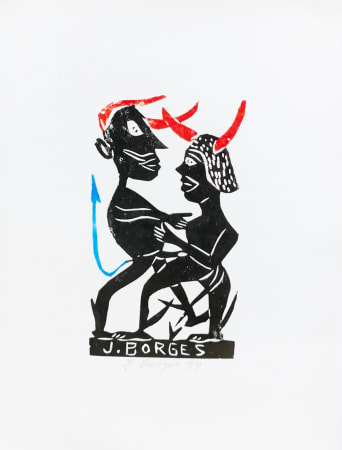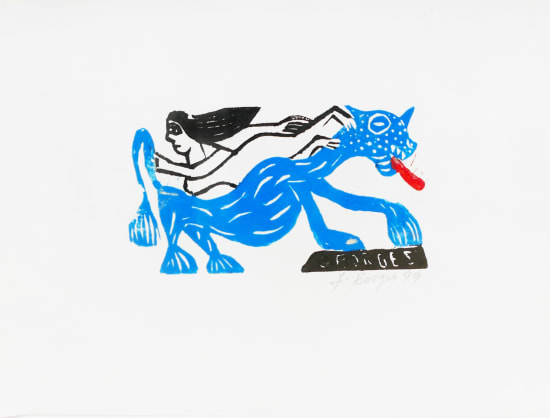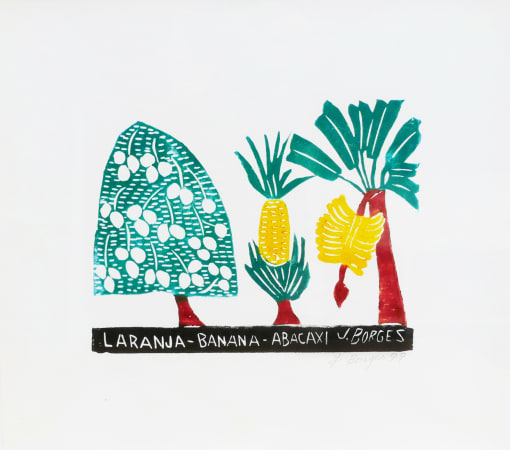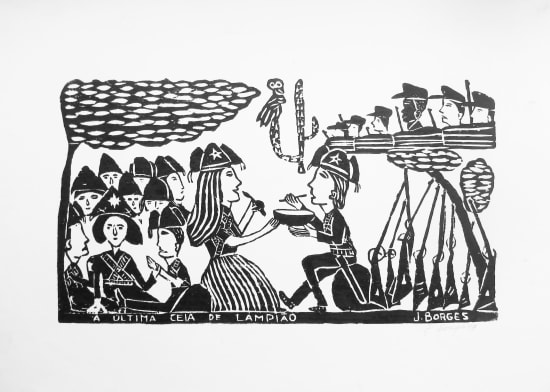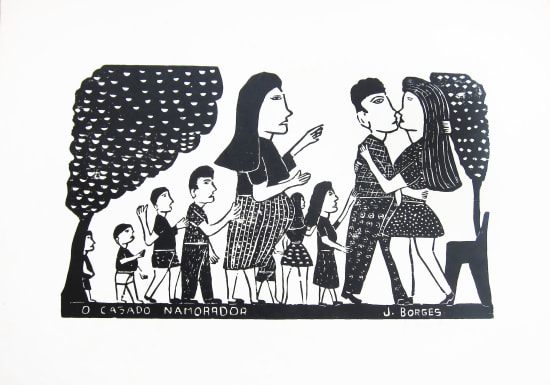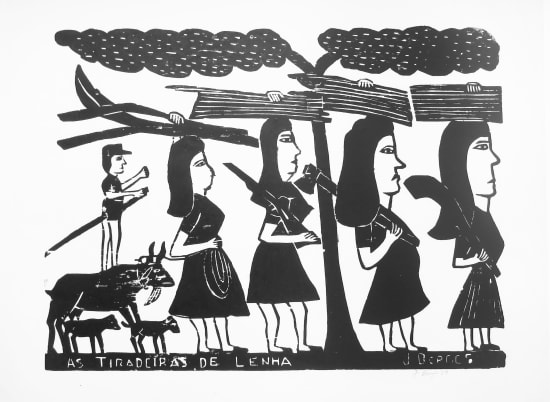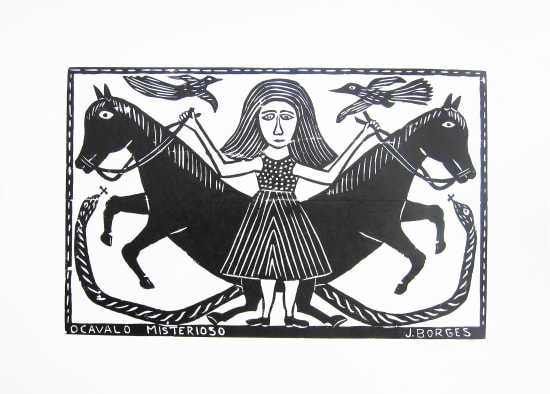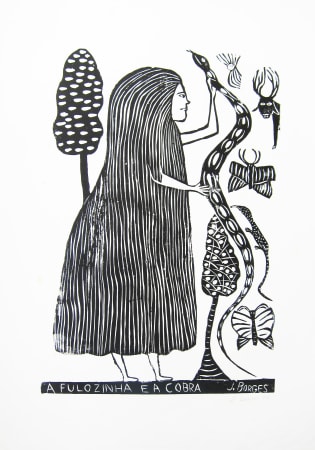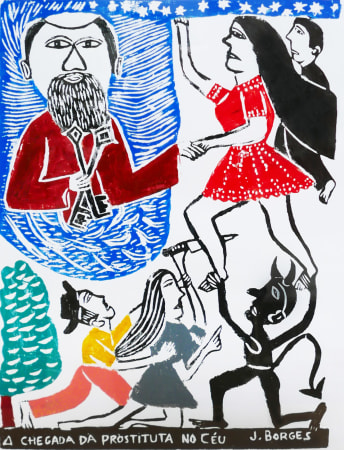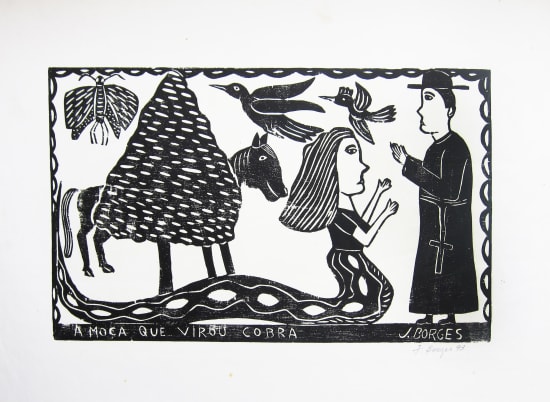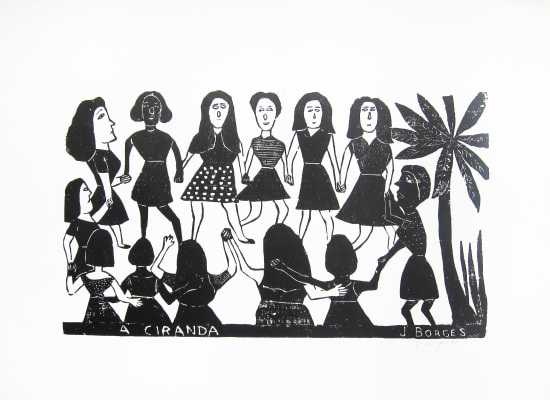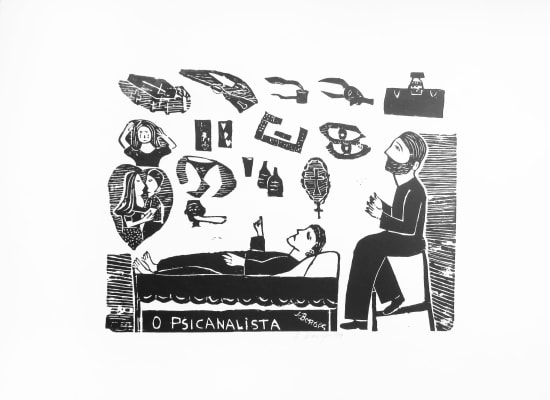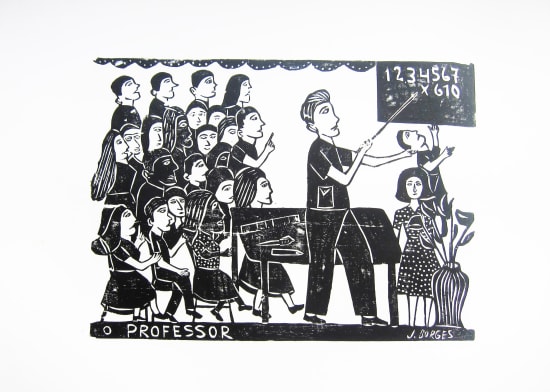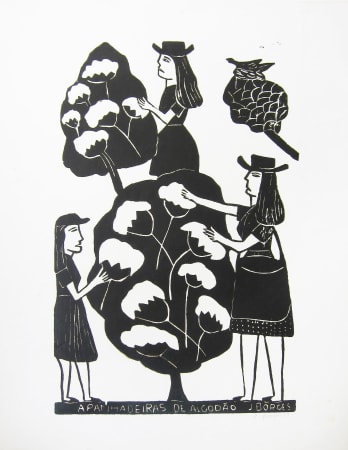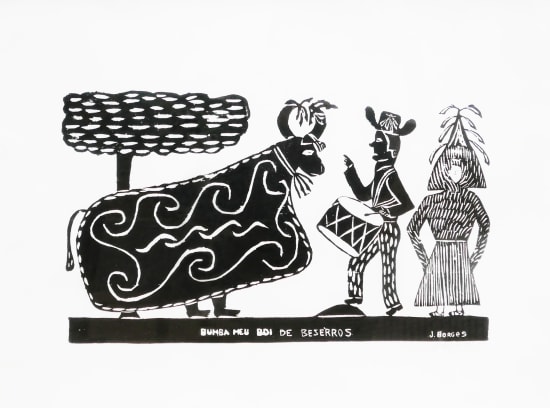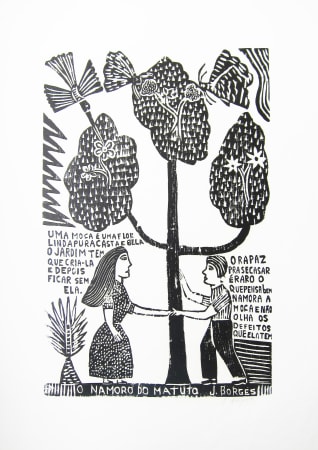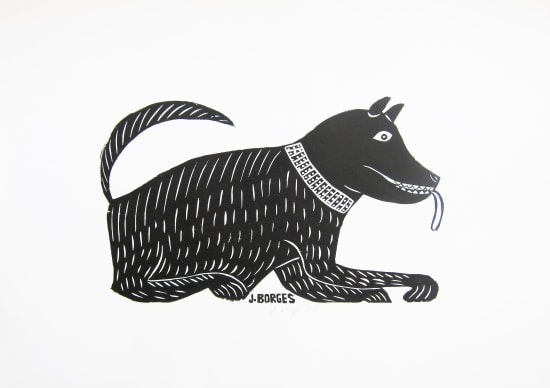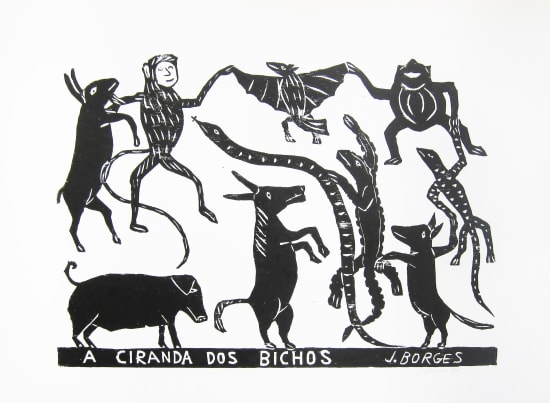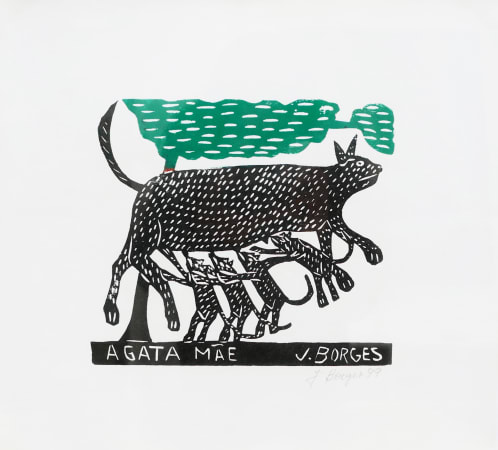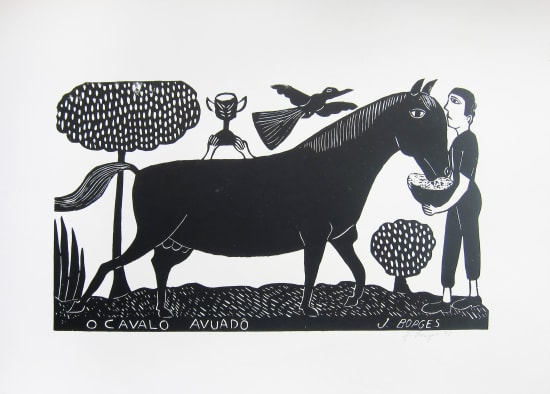José Borges
‘It was in a second-hand bookshop in Rio di Janiero, in 1999, that I first came across the work of José Borges: a small black-and-white woodcut, adorning the cover of a flimsy ‘chapbook’. It showed a devil prodding a young man dressed in jeans and a tee-shirt. The image had such graphic power and wit – and quality. I thought I had discovered an unsung genius.
I soon learnt that José Borges was one of Brazil’s most celebrated folk artists. Indeed he is famous across the globe, having exhibited everywhere from the Louvre to the Smithsonian Institute. A collection of his work is held by the Museum of International Folk Art in Santa Fe. In Brazil he is – very properly - considered a Living Cultural Treasure.
Born in 1935 in the village of Bezerros, in the North Eastern province of Pernambuco, Borges creates vividly imagined woodblock prints that derive from the centuries-old Brazilian tradition of ‘literatura de cordel’ – cheaply-produced illustrated pamphlets recounting popular tales, both sacred and profane. Borges initially made small-scale woodcuts to illustrate such stories, but in the 1960s he started increasing the scale of his work, creating stand-alone images that carried the cordel tradition into new and challenging areas.
Borges’ prints – whatever their scale - have a unique immediacy. They combine a distinctive blend of bold imagery, lyrical simplicity and a teasing sense of narrative. His motifs – human and animal – are all deeply felt; drawn, as they are, from the rural life, the myths and the dreams of his native Pernambuco. This is Folk Art that is at once universal and highly personal.’
-
 Untitled, 1999
Untitled, 1999 -
 Sāo Francisco - Saint Francisco, 1999
Sāo Francisco - Saint Francisco, 1999 -
 O Sol Quente No Sertão - The Hot Sun in The Backcountry, 1999
O Sol Quente No Sertão - The Hot Sun in The Backcountry, 1999 -
 Folk Tales , 1999
Folk Tales , 1999 -
 O Criador de Cabras - Goat Herder, 1999
O Criador de Cabras - Goat Herder, 1999 -
 A Dancada Cobra - The Cobra Dance, 1999
A Dancada Cobra - The Cobra Dance, 1999 -
 O Beijo do Bode - The Bull Kiss, 1999
O Beijo do Bode - The Bull Kiss, 1999 -
 O Jumento - The Donkey, 1999
O Jumento - The Donkey, 1999 -
 A Egua Mae - Mother Horse, 1999
A Egua Mae - Mother Horse, 1999 -
 Male and Female Red Horned Devil, 1999
Male and Female Red Horned Devil, 1999 -
 Blue Tiger, 1999
Blue Tiger, 1999 -
 Laranja Banana Abacaxi - Orange, Banana, Pineapple, 1999
Laranja Banana Abacaxi - Orange, Banana, Pineapple, 1999 -
 A Ultima Ceia De Lampião - Lampião's Last Super , 1999
A Ultima Ceia De Lampião - Lampião's Last Super , 1999 -
 O Casado Namorrador - The Married Boyfriend, 1986
O Casado Namorrador - The Married Boyfriend, 1986 -
 Sāo Francisco - Saint Francisco, 1999
Sāo Francisco - Saint Francisco, 1999 -
 As Tiradeiras de Lenha - The Ladies of Firewood , 1989
As Tiradeiras de Lenha - The Ladies of Firewood , 1989 -
 O Cavalo Misterioso - The Mysterious Horse, 1999
O Cavalo Misterioso - The Mysterious Horse, 1999 -
 A Fulozinha e a Cobra - Fulozinha and the Cobra, 1990
A Fulozinha e a Cobra - Fulozinha and the Cobra, 1990 -
 A Chegada Da Prostituta No Ceu - The Arrival of the Prostitute in Heaven), 1999
A Chegada Da Prostituta No Ceu - The Arrival of the Prostitute in Heaven), 1999 -
 A Moca Que Virou Cobra - The Girl Who Turned Cobra, 1993
A Moca Que Virou Cobra - The Girl Who Turned Cobra, 1993 -
 A Ciranda - The Ciranda, 1992
A Ciranda - The Ciranda, 1992 -
 O Psicanalista - The Psychoanalyst, 1999
O Psicanalista - The Psychoanalyst, 1999 -
 O Professor - The Professor , 1991
O Professor - The Professor , 1991 -
 Apanhadeiras De Algodāo - Cotton Pickers, 1989
Apanhadeiras De Algodāo - Cotton Pickers, 1989 -
 Bumba Meu Boi de Beserros - Bumba, My Ox from Beserros, 1998
Bumba Meu Boi de Beserros - Bumba, My Ox from Beserros, 1998 -
 O Namoro Do Matuto - The Matuto Dating , 1991
O Namoro Do Matuto - The Matuto Dating , 1991 -
 Dog, 1999
Dog, 1999 -
 A Ciranda Dos Bichos - The Animal Ciranda, 1998
A Ciranda Dos Bichos - The Animal Ciranda, 1998 -
 A Gata Máe - The Mother Cat, 1999
A Gata Máe - The Mother Cat, 1999 -
 O Cavalo Avuadô - The Avuadô Horse, 1995
O Cavalo Avuadô - The Avuadô Horse, 1995
